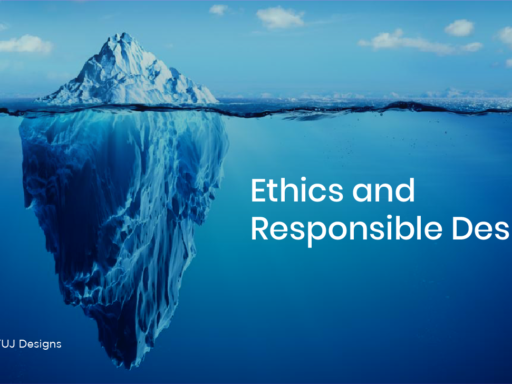I. Introduction to Web Development Careers
A. Definition and Scope of Web Development: – Explanation of web development’s role in creating websites, web applications, and online platforms. – Overview of the evolution of web technologies and their impact on modern businesses and society.
B. Overview of Career Paths: – Introduction to various career paths within web development, including front-end, back-end, full-stack, and specialized roles like UI/UX design, web accessibility, and security engineering. – Importance of understanding the differences between these paths and choosing the one that aligns with personal interests, skills, and career goals.
C. Importance of Continuous Learning and Adaptability: – Emphasis on the dynamic nature of web development and the need for professionals to stay updated with evolving technologies, frameworks, and industry best practices. – Introduction to lifelong learning strategies, such as online courses, workshops, conferences, and community participation, to foster professional growth and adaptability.
II. Front-End Development Career Path
A. Role Overview and Responsibilities: – Detailed explanation of the front-end developer’s role in creating visually appealing and user-friendly interfaces for websites and web applications. – Discussion of responsibilities, including translating design mockups into code, optimizing performance, and ensuring cross-browser compatibility.
B. Essential Skills and Tools: – Overview of essential tools and technologies for front-end development, including text editors, Integrated Development Environments (IDEs), and browser developer tools. – Emphasis on the importance of proficiency in HTML, CSS, and JavaScript, along with knowledge of version control systems like Git.
C. HTML, CSS, and JavaScript Fundamentals: – In-depth exploration of HTML5, CSS3, and modern JavaScript syntax, features, and best practices. – Explanation of semantic HTML markup, CSS box model, flexbox, grid layout, and CSS preprocessors like Sass. – Introduction to JavaScript fundamentals, including variables, data types, functions, and control structures.
D. Responsive Web Design Principles: – Explanation of responsive design principles, including fluid grids, flexible images, and media queries. – Discussion of responsive frameworks like Bootstrap and Foundation, along with techniques for creating mobile-first and adaptive layouts.
E. JavaScript Frameworks: React.js, Angular, Vue.js: – Overview of popular JavaScript frameworks/libraries like React.js, Angular, and Vue.js, and their respective ecosystems. – Comparison of features, performance, and use cases to help developers choose the right framework for their projects.
F. User Interface (UI) and User Experience (UX) Design Basics: – Introduction to UI/UX design principles, including usability, accessibility, and user-centered design. – Discussion of wireframing, prototyping, and usability testing techniques to create intuitive and engaging user interfaces.
III. Back-End Development Career Path
A. Role Overview and Responsibilities: – Detailed explanation of the back-end developer’s role in building server-side logic, databases, and APIs to power web applications. – Discussion of responsibilities, including database design, API development, authentication, and security.
B. Proficiency in Server-Side Programming Languages: – Exploration of popular server-side programming languages like Python, Ruby, Java, PHP, and JavaScript (Node.js), along with their frameworks and libraries. – Comparison of language features, performance, and suitability for different types of projects.
C. Database Management and Interaction: – Overview of relational databases (e.g., MySQL, PostgreSQL) and NoSQL databases (e.g., MongoDB) commonly used in web development. – Explanation of database design principles, normalization, indexing, and querying techniques.
D. API Development and Integration: – Introduction to RESTful API design principles, including resource naming, HTTP methods, and response formats. – Discussion of API authentication methods, rate limiting, versioning, and documentation best practices.
E. Security Considerations in Back-End Development: – Explanation of common security vulnerabilities in web applications, such as SQL injection, cross-site scripting (XSS), and CSRF attacks. – Discussion of security best practices, including input validation, parameterized queries, encryption, and role-based access control (RBAC).
IV. Full-Stack Development Career Path
A. Role Overview and Responsibilities: – Detailed explanation of the full-stack developer’s role in handling both front-end and back-end development tasks to build end-to-end web applications. – Discussion of responsibilities, including project architecture, feature implementation, testing, and deployment.
B. End-to-End Development Process: – Overview of the end-to-end web development process, including requirements gathering, design, development, testing, and deployment. – Introduction to Agile methodologies like Scrum and Kanban for iterative and collaborative project management.
C. Front-End and Back-End Integration: – Discussion of techniques for integrating front-end and back-end components, including API consumption, data binding, and state management. – Introduction to popular full-stack frameworks like MEAN (MongoDB, Express.js, Angular, Node.js) and MERN (MongoDB, Express.js, React.js, Node.js).
D. Version Control and Collaboration with Git: – In-depth explanation of version control concepts, including repositories, branches, commits, merges, and pull requests. – Introduction to Git workflows like feature branching, Gitflow, and GitHub Flow for collaborative development.
E. DevOps Practices and Deployment Strategies: – Overview of DevOps principles and practices, including continuous integration (CI), continuous deployment (CD), and infrastructure as code (IaC). – Discussion of deployment strategies, including containerization with Docker, container orchestration with Kubernetes, and serverless architectures.
F. Balancing Technical Skills with Project Management and Communication: – Exploration of soft skills essential for full-stack developers, including communication, teamwork, problem-solving, and time management. – Introduction to project management tools like Jira, Trello, and Asana for planning, tracking, and organizing development tasks.
V. Specialized Roles in Web Development
A. UI/UX Designer: – Explanation of UI/UX design principles, including visual hierarchy, typography, color theory, and user flow. – Introduction to design tools like Sketch, Adobe XD, and Figma for creating wireframes, mockups, and prototypes.
B. Web Accessibility Specialist: – Overview of web accessibility standards and guidelines, including WCAG (Web Content Accessibility Guidelines) and ARIA (Accessible Rich Internet Applications). – Discussion of assistive technologies like screen readers, keyboard navigation, and voice recognition, and techniques for testing accessibility compliance.
C. Security Engineer: – Explanation of the role of security engineers in identifying, mitigating, and preventing security threats in web applications. – Introduction to security testing tools like OWASP ZAP, Burp Suite, and Metasploit for vulnerability assessment and penetration testing.
D. Data Analyst: – Exploration of the role of data analysts in extracting insights from web analytics, user behavior, and performance metrics. – Introduction to data visualization tools like Tableau, Power BI, and Google Data Studio for creating interactive dashboards and reports.
VI. Key Skills and Qualifications for Web Developers
A. Technical Skills: – Overview of essential technical skills for web developers, including proficiency in programming languages, frameworks, libraries, and tools. – Discussion of continuous learning strategies, such as online courses, tutorials, workshops, and open-source contributions.
B. Soft Skills: – Exploration of soft skills critical for web developers, including communication, teamwork, problem-solving, creativity, and adaptability. – Introduction to interpersonal skills like active listening, empathy, and conflict resolution for effective collaboration in development teams.
C. Educational Backgrounds: – Discussion of different educational paths for aspiring web developers, including traditional computer science degrees, coding bootcamps, self-paced online courses, and certifications. – Comparison of pros and cons of each educational path and recommendations based on individual learning preferences and career goals.
D. Building a Portfolio and Showcasing Skills: – Practical advice for building a strong portfolio showcasing projects, code samples, and case studies that demonstrate technical proficiency and problem-solving abilities. – Introduction to platforms like GitHub, GitLab, and Bitbucket for hosting code repositories and collaborating with other developers.
VII. Career Progression and Advancement in Web Development
A. Entry-Level Positions: – Exploration of entry-level roles for junior developers, including internships, apprenticeships, and entry-level positions in startups and small companies. – Discussion of the importance of gaining practical experience, building a professional network, and seeking mentorship opportunities.
B. Mid-Level Positions: – Overview of mid-level roles for experienced developers, including senior developer, team lead, and technical lead positions in medium-sized and large companies. – Discussion of responsibilities, including mentoring junior developers, leading technical projects, and contributing to architectural decisions.
C. Advanced Specializations and Leadership Opportunities: – Exploration of advanced specializations for senior developers, including technical architect, engineering manager, and director of engineering roles. – Discussion of leadership skills, strategic thinking, and business acumen required for leadership positions in web development.
D. Continuing Education and Professional Development Resources: – Introduction to continuing education resources for web developers, including online courses, workshops, conferences, and professional certifications. – Discussion of professional development opportunities, such as attending meetups, joining online communities, and participating in hackathons and coding competitions.
VIII. Industry Trends and Job Outlook in Web Development
A. Emerging Technologies Shaping the Future of Web Development: – Exploration of emerging technologies like Progressive Web Apps (PWAs), serverless architecture, and artificial intelligence/machine learning (AI/ML) in web development. – Discussion of potential applications, benefits, and challenges of adopting these technologies in real-world projects.
B. Remote Work Trends and Global Opportunities: – Overview of remote work trends in the web development industry, including the shift to distributed teams, flexible work arrangements, and the rise of digital nomadism. – Discussion of global job opportunities, freelance platforms, and remote job boards for web developers seeking location-independent careers.
C. Job Market Projections and Demand for Web Developers: – Analysis of job market trends and projections for web development careers, including demand for specific skills, experience levels, and geographic regions. – Discussion of factors influencing job market dynamics, such as industry growth, technological advancements, and economic conditions.
D. Opportunities in Niche Markets: – Exploration of niche markets and industry sectors with high demand for web development talent, such as e-commerce, fintech, healthtech, edtech, and gaming. – Discussion of specialized skills, domain knowledge, and career opportunities in these niche markets for web developers.
IX. Tips for Landing a Web Development Job
A. Crafting an Effective Resume and Cover Letter: – Practical tips for writing a compelling resume and cover letter tailored to web development roles, including highlighting relevant skills, experience, and projects. – Discussion of resume formats, keywords, and best practices for catching the attention of hiring managers and recruiters.
B. Building an Impressive Portfolio and GitHub Profile: – Guidance for building a portfolio showcasing projects, code samples, and contributions that demonstrate technical proficiency and problem-solving abilities. – Discussion of GitHub best practices, including maintaining clean code repositories, contributing to open-source projects, and showcasing collaborative work.
C. Networking and Leveraging Professional Connections: – Strategies for networking with other web developers, industry professionals, and potential employers through online communities, meetups, and conferences. – Discussion of the importance of building and nurturing professional relationships for career advancement and job opportunities.
D. Preparing for Technical Interviews and Coding Challenges: – Tips for preparing for technical interviews and coding challenges, including practicing coding problems, algorithms, and data structures. – Discussion of common interview formats, technical assessment platforms, and resources for honing problem-solving and coding skills.
E. Negotiating Salary and Evaluating Job Offers: – Guidance for negotiating salary, benefits, and other job offer terms with potential employers, including researching market rates and understanding compensation packages. – Discussion of factors to consider when evaluating job offers, such as company culture, career growth opportunities, and work-life balance.
X. Conclusion: Embracing the Journey of Web Development Careers
A. Reflection on the Diversity and Dynamism of Web Development Roles: – Summary of the diverse career paths, roles, and opportunities available in web development, from front-end and back-end development to specialized roles and leadership positions. – Acknowledgment of the dynamic nature of the industry and the importance of adaptability, continuous learning, and personal growth.
B. Encouragement for Aspiring Developers to Pursue Their Passions and Goals: – Words of encouragement for aspiring web developers to pursue their passions, hone their skills, and overcome challenges on their journey to success. – Emphasis on the value of persistence, resilience, and lifelong learning in achieving professional fulfillment and making a positive impact in the field.
C. Commitment to Lifelong Learning and Personal Growth in the Field: – Commitment to lifelong learning and personal growth in the field of web development, including ongoing education, skill-building, and community engagement. – Encouragement for readers to continue exploring new technologies, sharing knowledge, and contributing to the vibrant web development community.






